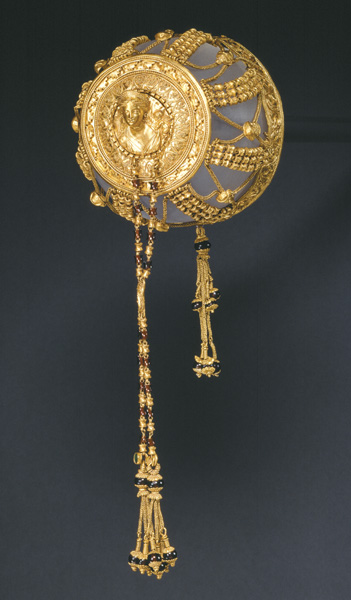

The face of Aphrodite, Greek goddess of love, gazes from the central medallion of this garnet and glass-studded gold hairnet from Hellenistic Alexandria. Its original owner is unknown, as is the context of its discovery, but it probably belonged to a wealthy—or royal—woman living in Alexandria in the second or third century B.C., the height of the Ptolemaic period in Egypt.
The Greek Ptolemies ruled Egypt from the death of Alexander the Great in 323 B.C. until the death of Cleopatra VII in 30 B.C. The goddess Aphrodite was seen as the divine counterpart to the queens of the Ptolemies, and Aphrodite’s face on this hairnet resembles portraits of Arsinoe III, wife of the third-century B.C. king Ptolemy IV. If the resemblance is intentional, it would be a symbolic expression of dynastic power.
Alexander’s conquest of the Persian Empire in 332 B.C. created a new influx of gold into the hitherto gold-poor Greek world. The wealthy Ptolemies who succeeded Alexander were avid consumers of this prized commodity. This hairnet, now in the Getty Museum, is a highly elaborate piece of gold work. Bands of beaded gold chains were linked by cross chains, forming the net itself. Tassels hung by long gold chains from the central medallion in back, which was framed by circular bands of gold filigree.
Already a library member? Log in here.
Institution user? Log in with your IP address.

